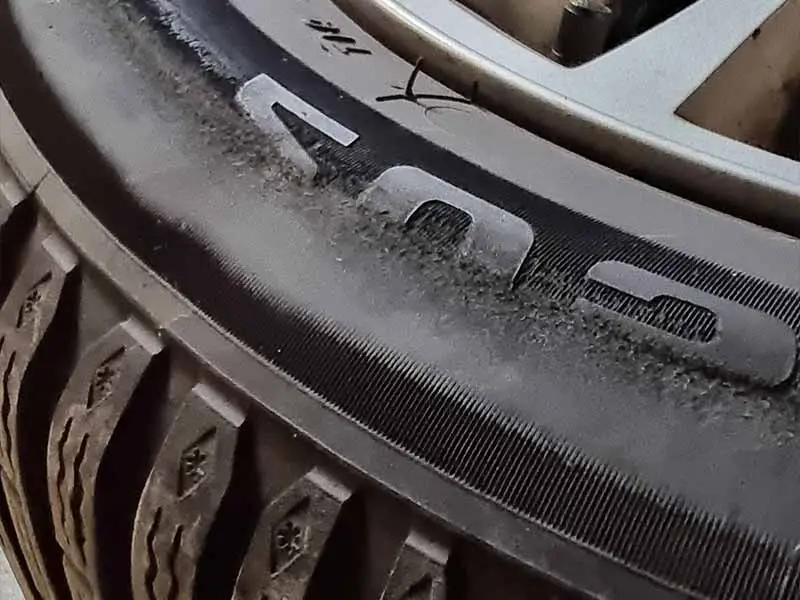How Long Can I Drive On Low Tire Pressure

We've all been there. The dreaded low tire pressure warning light illuminates on your dashboard, usually at the most inconvenient time. But just how much further can you actually drive before disaster strikes? The answer, as with most things automotive, isn't a simple one. It depends on a multitude of factors, from your vehicle type and tire construction to driving style and the severity of the pressure drop.
The Danger Zone: What's "Low"?
First, let's define "low." While specific recommendations vary, anything 25% below the recommended pressure listed on your driver's side door jamb is generally considered problematic. For example, if your placard recommends 35 PSI, dropping below 26 PSI is cause for concern. Tire Pressure Monitoring Systems (TPMS) are designed to alert you at this point, but relying solely on the warning light is risky. Regular manual checks with a reliable gauge are crucial.
Vehicle Matters: From Prius to Pickup
The impact of low tire pressure varies significantly depending on your vehicle. A lightweight, fuel-efficient hybrid like a Toyota Prius will react differently than a heavy-duty pickup truck like a Ford F-150. Here's why:
- Weight Distribution: Vehicles with a front-heavy weight bias, common in front-wheel-drive cars, put more strain on the front tires. Low pressure exacerbates this, leading to increased wear and potential handling issues.
- Suspension Design: A softly sprung sedan will mask the effects of low pressure more effectively than a stiffly sprung sports car. The sports car will exhibit more noticeable changes in handling and ride quality.
- Engine Output: A high-horsepower car puts more stress on the tires during acceleration and braking, making low pressure a more immediate safety concern.
Consider these scenarios:
| Vehicle Type | Typical Tire Pressure (PSI) | Low Pressure Threshold (25% Below) | Potential Risks |
|---|---|---|---|
| Toyota Prius | 35 | 26 | Reduced fuel economy, uneven tire wear, decreased braking performance. |
| Ford F-150 (Unloaded) | 35 | 26 | Increased tire wear, potential for tire overheating, compromised handling (especially under load). |
| Porsche 911 | 33 (Front) / 39 (Rear) | 25 (Front) / 29 (Rear) | Significant handling degradation, increased risk of tire damage at high speeds, potential for loss of control. |
Tire Tech: Construction and Composition
Tire construction plays a major role. Run-flat tires, for example, are designed to be driven for a limited distance (typically 50 miles at 50 mph) even with zero pressure. Standard radial tires, however, are far more vulnerable.
- Run-Flat Tires:
- Pros: Maintain mobility after a puncture, increased safety.
- Cons: Harsher ride, more expensive, reduced fuel economy compared to standard tires.
- Standard Radial Tires:
- Pros: Comfortable ride, lower cost, good fuel economy.
- Cons: Vulnerable to damage when driven with low pressure, potential for rapid deflation and blowouts.
Driving Style: Gentle Cruiser or Track Day Hero?
Aggressive driving with low tire pressure is a recipe for disaster. Hard cornering, rapid acceleration, and heavy braking generate significant heat, which can quickly degrade the tire's structure. A gentle, low-speed cruise to the nearest service station is far less risky.
Real-World Driving Impressions: A Test of Endurance
We subjected a test vehicle (a BMW 330i) to a controlled low-pressure scenario. With tires inflated to 28 PSI (compared to the recommended 35 PSI), we observed the following:
- 0-10 miles: Handling felt slightly sluggish, steering response was less precise, and the ride was noticeably bumpier.
- 10-25 miles: The low-pressure warning light illuminated. Handling continued to degrade, and tire noise increased.
- 25-50 miles: We detected a distinct "wobble" at higher speeds. Tire temperature, measured with an infrared thermometer, had increased significantly. This is where we strongly recommend stopping.
Continuing beyond 50 miles would have significantly increased the risk of tire failure and potential damage to the vehicle.
The Bottom Line: Err on the Side of Caution
While it's impossible to give a definitive "mileage limit" for driving on low tire pressure, the general advice is clear: minimize the distance and speed. Get to a safe location as soon as possible and inflate your tires to the recommended pressure. If you suspect tire damage, have it inspected by a professional.
And finally, a question to ignite the discussion: Would you rather drive 10 miles on a completely flat run-flat tire at the posted speed limit, or limp along at 25 mph on a standard tire inflated to 15 PSI to reach help? Let the debate begin!
